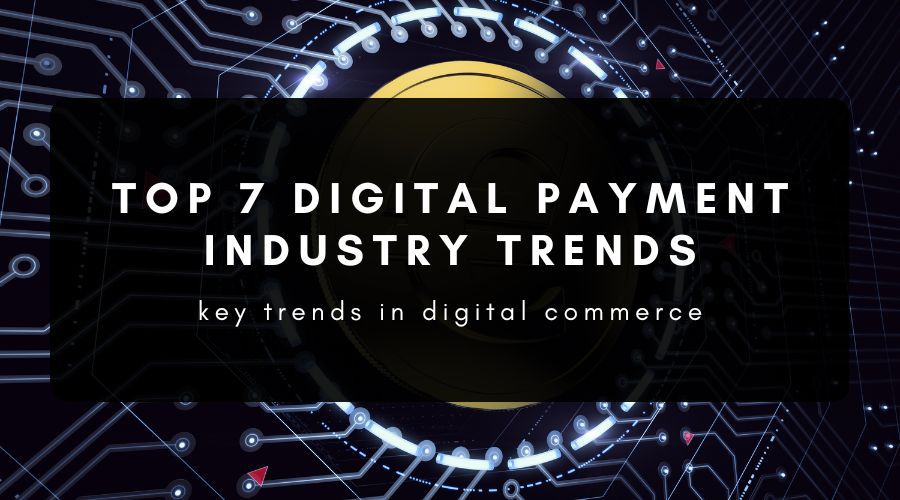
7 Digital Payment Industry Trends You Need to Know
The digital transformation of commerce has revolutionised the way people pay for goods and services both online and in-store, and the merchants who stay abreast of digital payment industry trends are the ones who will benefit the most from these changes in the payments industry.
In the post-pandemic world, the most important digital payment trends include:
- QR code payments
- Buy now pay later
- Connected commerce
- Digital payments for B2B
- Cross-border payment services
- Advanced cybersecurity tools
QR Code Payments
QR code payments represent a second trend in the shift towards digital transactions. QR codes can be used for in-store payments as well as for online shopping—Walmart has even adopted the trend, allowing customers to pay using a QR code through the Walmart payment app.
While QR code payments are similar to mobile payments in that they use near-field communication technology, they give customers the option of paying directly from their bank account without any need for a card. This provides an additional layer of security for the customer and reduces (or eliminates) card transaction fees for the merchant.
To implement QR code payments, you’ll need to choose an app that creates QR codes. This will generally be an online banking app. Then, either send the QR code to the customer digitally or print it on the invoice. The customer can then scan the QR code with their mobile phone to complete the payment.
Buy Now Pay Later (BNPL)
Buy now pay later (BNPL) services are the online version of instalment financing. Backed by BNPL providers, customers can spread out the cost of an item over four or more instalments, allowing them to purchase a higher-cost item now and pay for it over a period of weeks or months before any interest is charged.
The mushrooming popularity of BNPL services can largely be attributed to young customers’ aversion to credit cards. With BNPL, they can enjoy a lower up-front cost and have the goods or services now without getting into uncontrolled amounts of credit card debt.
According to a report from Juniper Research, around 24% of online sales are expected to be paid for using BNPL services by 2026, compared to 9% in 2021. Furthermore, RBC Capital Markets estimates that offering a BNPL payment method at the checkout can lead to 20-30% higher conversion rates and 30-50% higher average ticket sizes.
Popular BNPL providers that merchants might use include Affirm, Afterpay, Klarna, Sezzle and PayPal’s “Pay in 4.” After adding a BNPL payment method to your payment gateway, you could see your average ticket size grow.
Connected Commerce
When stay-at-home orders kept customers from visiting stores, the companies that proved to be the most resilient were those that adopted a connected, omnichannel approach that allowed their customers to keep participating from home.
Connected commerce goes much further than simply offering a digital checkout coupled with local delivery. At its root, it represents a fundamental shift to seeing the digital and physical worlds as integrated—reaching out to new customers digitally as well as in person.
Connected, omnichannel business strategies vary widely and adapt to local needs and preferences. Some key trends in connected, omnichannel commerce include:
- Live online menus
- Buy online, pick up in-store (BOPIS), curbside pick-up and delivery
- Social media e-commerce
- Loyalty programs
- Personalised email marketing
- Customer education and content marketing
- Memberships and subscriptions
To implement omnichannel strategies like loyalty programs, email marketing and subscriptions, it’s important to choose a payment provider that offers a comprehensive range of merchant services, including recurring billing, customer data compilation and loyalty points.
Digital Payments for B2B Transactions
While digital transactions have been commonplace in the B2C market for years, electronic payment systems for B2B are only just catching up to speed. The personalised nature of B2B commerce makes it more complicated than B2C commerce—digital payment technologies must be able to offer customised quotes and apply a previously agreed rate or discount to future orders.
Today, connected commerce and artificial intelligence are making electronic payments more accessible for B2B sales than they have ever been in the past. Special offers can be generated automatically by a chatbot or manually within minutes after a business customer makes an inquiry online.
As digital payments become the norm rather than the exception, merchants need to be prepared to cater to the needs of B2B customers online, with:
- Near-instant online quotes
- Ongoing digital outreach
- Personalised cross-sells and upsells
- Personalised reorder links
- Self-service online customer accounts
Cross-Border Payment Services
Migration, remote work, and the rise of the global market have increased the need for easy cross-border payment services that are more affordable than those that traditional payment providers and financial institutions can provide.
According to a report from Visa in 2021, around 200 million migrant workers sent payments to family members back home and an estimated one in nine people globally may be supported by these payments. The need for easy international remittances is huge.
To fill the breach, fintechs and technology providers have developed platforms that allow people to send money quickly, securely and at a minimal cost to family and friends around the world. Some of these companies, such as Wise (formerly TransferWise) offer more finance functions than remittances alone, such as savings jars, debit cards, currency conversions and local bank accounts in a wide range of currencies.
For e-commerce merchants, the rise of fintech and cross-border payment services has implications for hiring remote employees. Not only will you need to think about the most cost-effective way to send cross-border payments to employees that are located abroad, but many of those employees may also plan to send some of their earnings to family elsewhere—making online remittance companies a great solution for payments all around.
Advanced Cybersecurity Tools
The explosion of online shopping has been a great boon for e-commerce merchants. Unfortunately, it has also been a great boon for fraudsters. According to data from Statista, e-commerce payment fraud was responsible for €19 billion in losses in 2021.
In response to the increase in fraud and new kinds of cyber threats, e-commerce merchants have needed to up their game with smarter and more responsive cyber security tools:
Data Privacy and Encryption
Anyone who sells online has an obligation to protect customer data at every stage of the purchase process through end-to-end encryption. In Europe, this is written into law with the GDPR data privacy regulations.
Encryption involves—at a minimum—obtaining a secure socket layer (SSL) certificate for your website. Then, you’ll also need to comply with the PCI-DSS standards for payment security.
Please note: If you use a hosted payment gateway, no card details will be stored on your site and the host will take care of PCI compliance. However, if you use an API-hosted payment solution, you will need to ensure PCI compliance on your end as well.
Adjustable Fraud Scrub
Even after your site is secure, fraudsters can still take advantage of unsuspecting customers and merchants using payment fraud strategies. Some of the most common forms of fraud include:
- Identity theft
- Account takeover fraud
- New account fraud
- Chargeback fraud
- Triangulation fraud
- Affiliate fraud
- Website hacking
As cyber criminals develop newer and more sophisticated techniques, merchants need to be prepared with e-commerce fraud protection software that uses artificial intelligence and machine learning to recognise suspicious behaviour in addition to verification tools such as card verification value (CVV), address verification service (AVS) and reverse lookup for email addresses and phone numbers.
Unfortunately, purchases from legitimate customers can sometimes be identified as suspicious if they are travelling abroad or placing an especially large order. That’s why digital payment industry trends include fraud scrub solutions that:
- Can be configured to flag certain transactions rather than block them outright
- Can be adjusted to allow for increased sales at certain times of the year
- Are backed by a customer service team that’s available 24/7 to help
Digital Payment Industry Trends: Where to Start
The number of new digital payment industry trends can seem overwhelming for both new and established e-commerce merchants. However, it’s not all or nothing. If you’re not ready to plunge headlong into the world of digital payments, choose one trend that would have the biggest impact on your operations right now.
Perhaps offering digital payments for B2B would solve a bottleneck in your quoting and re-order operations. Or perhaps finding a good cross-border fintech company could cut your global payroll costs. Ultimately, the best way to stay abreast of digital payment industry trends is to partner with a merchant services provider that has its finger on the pulse and can tailor its services to meet your needs.

